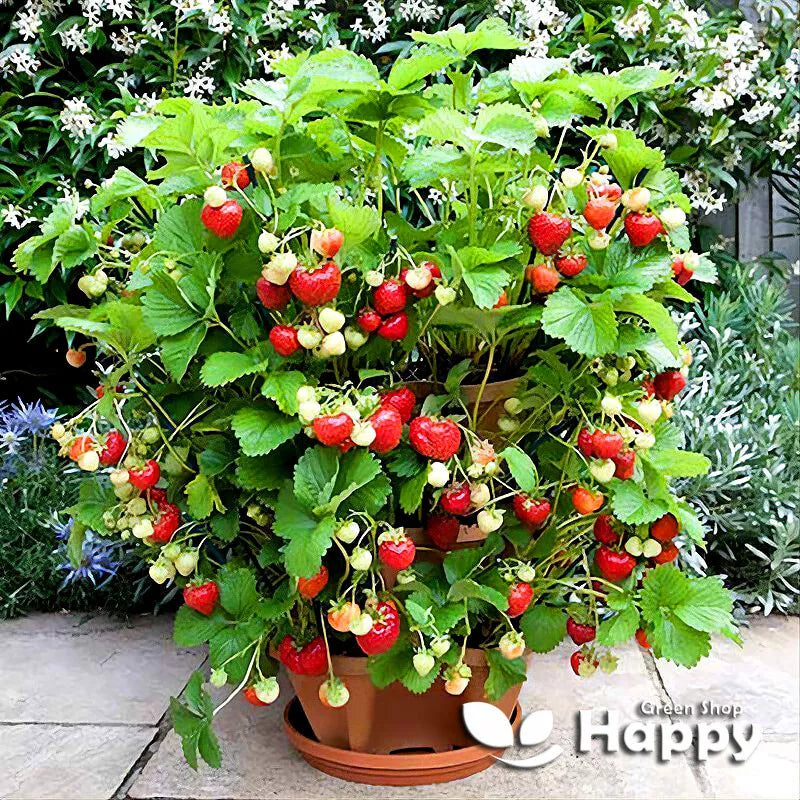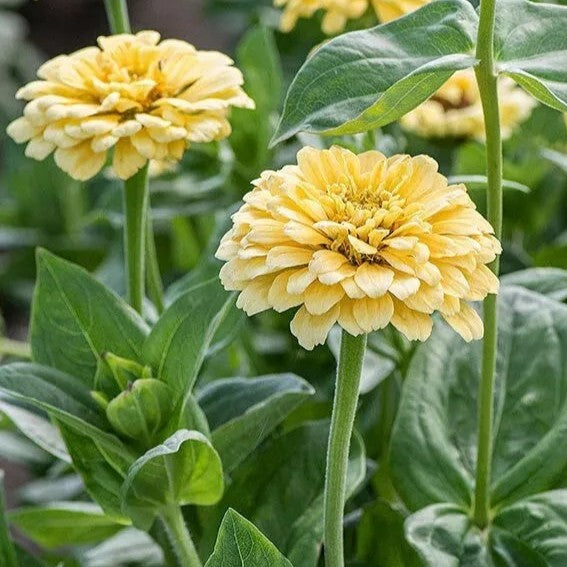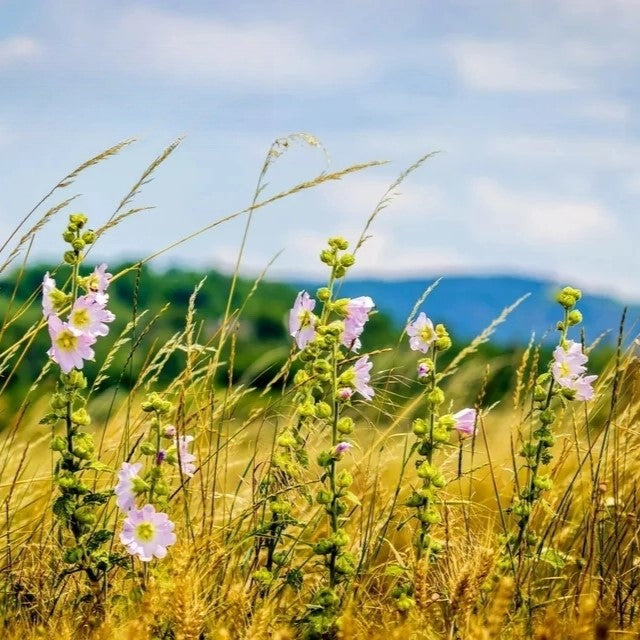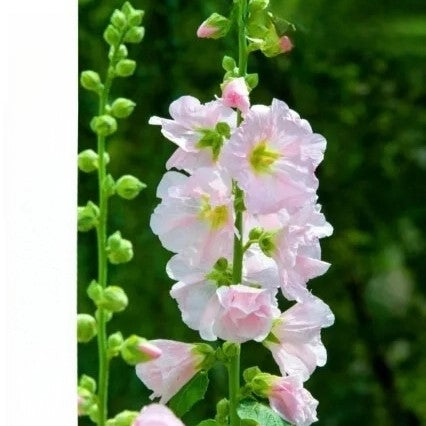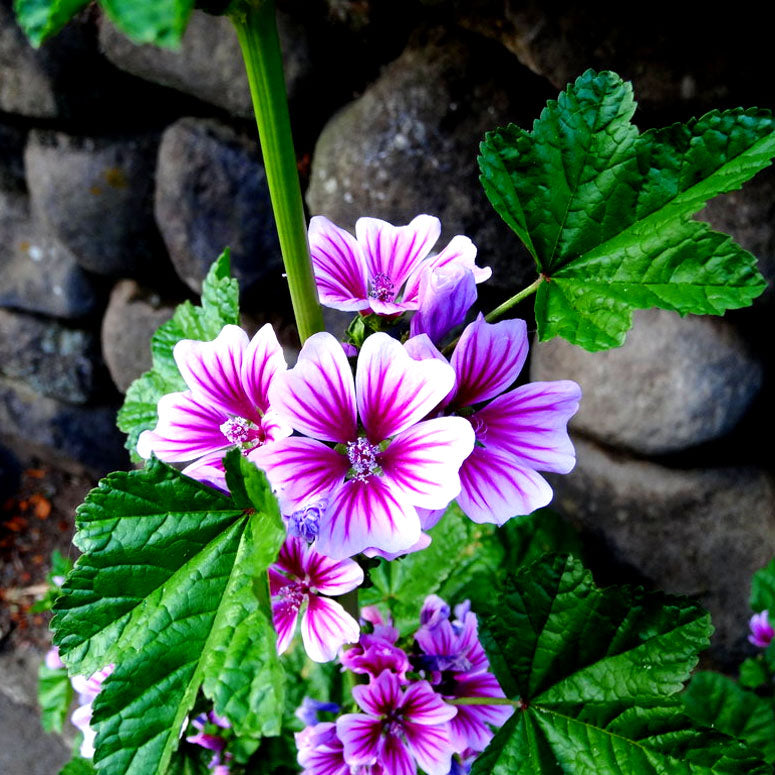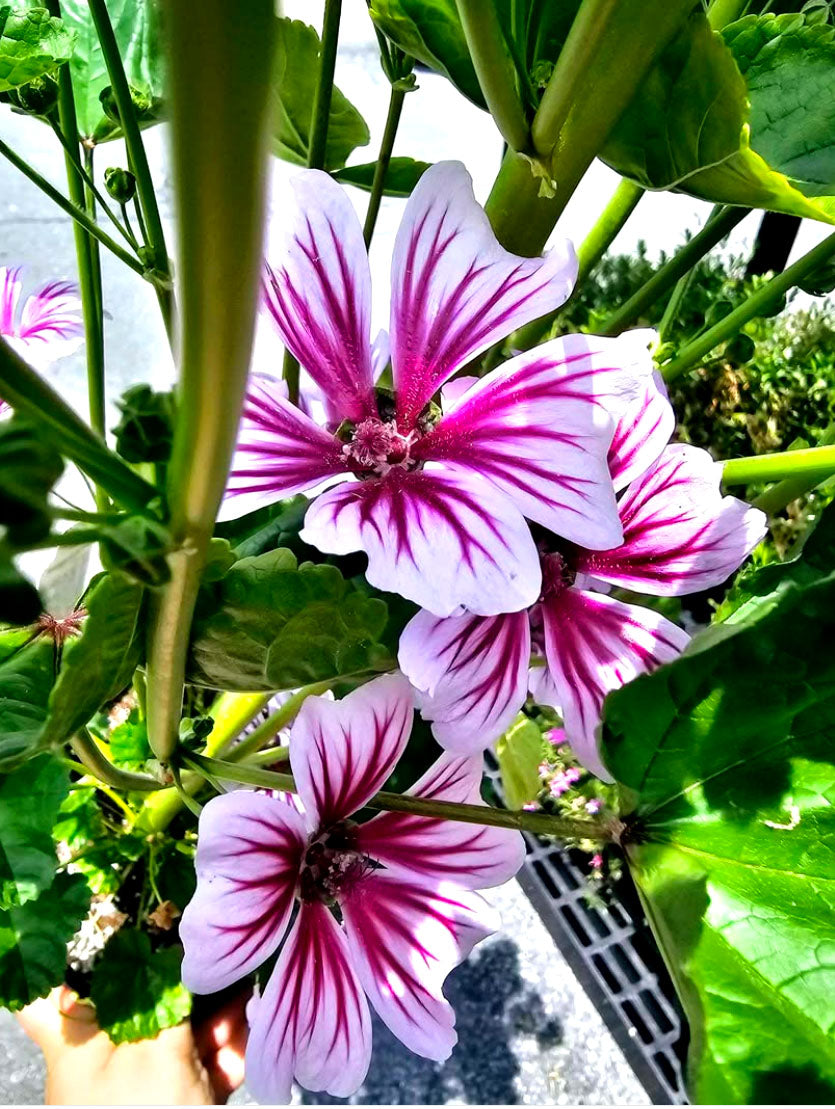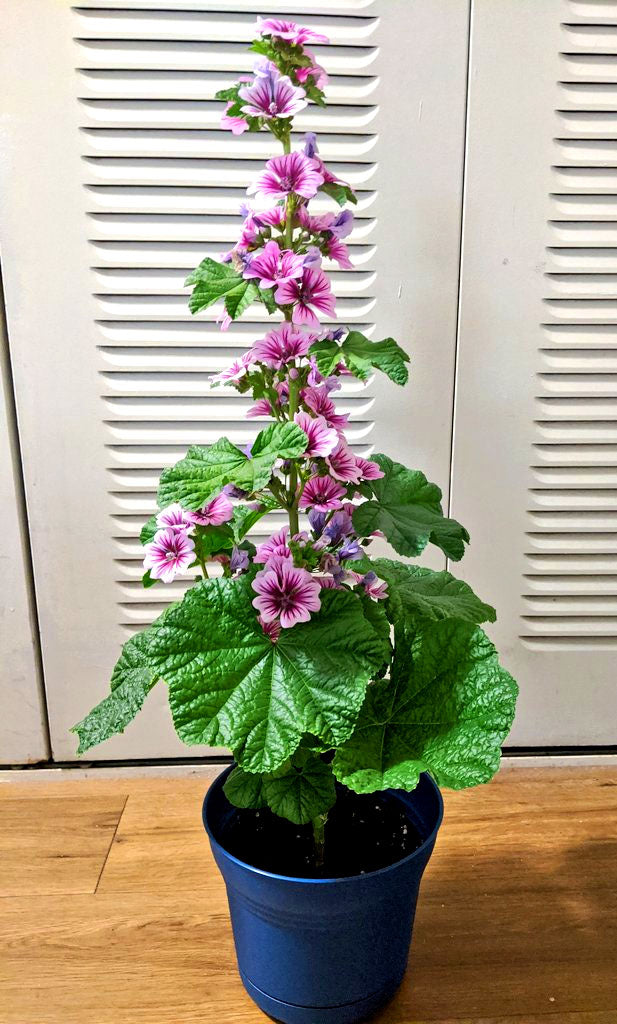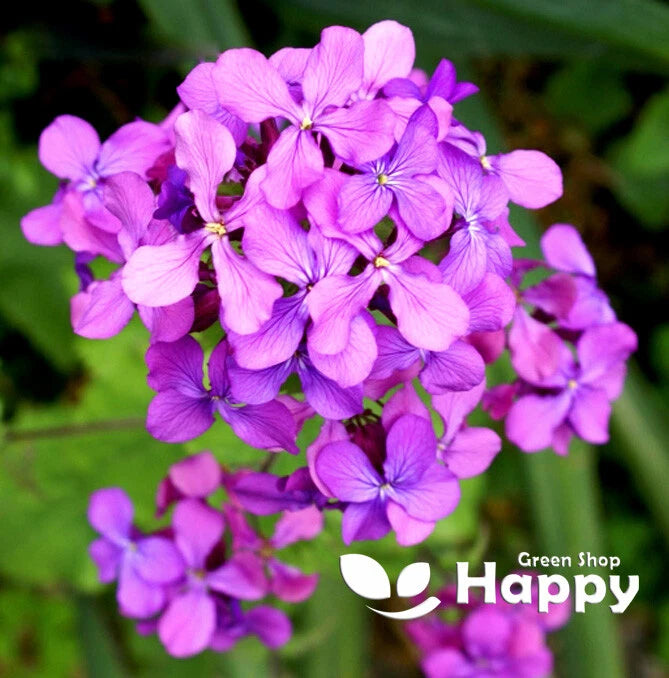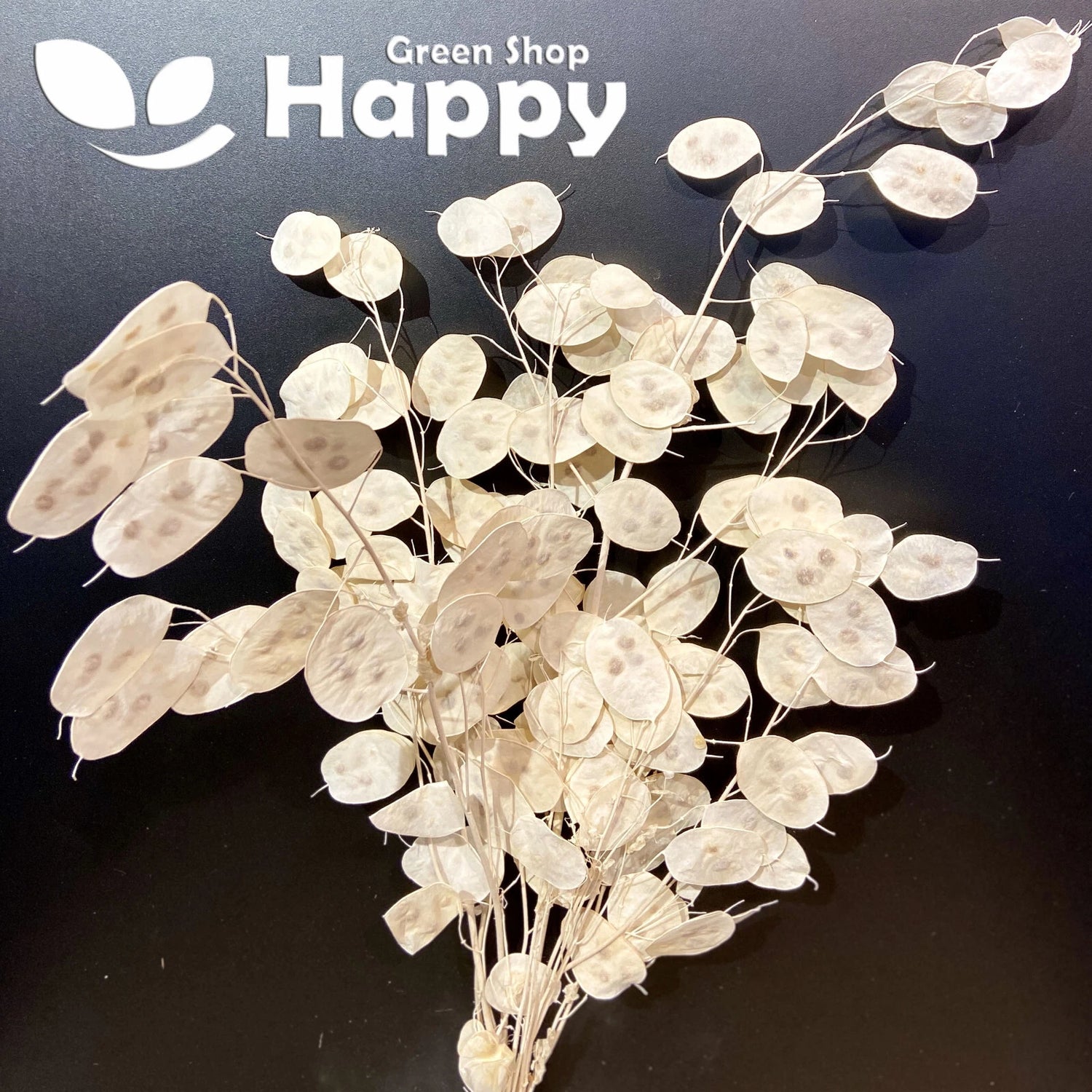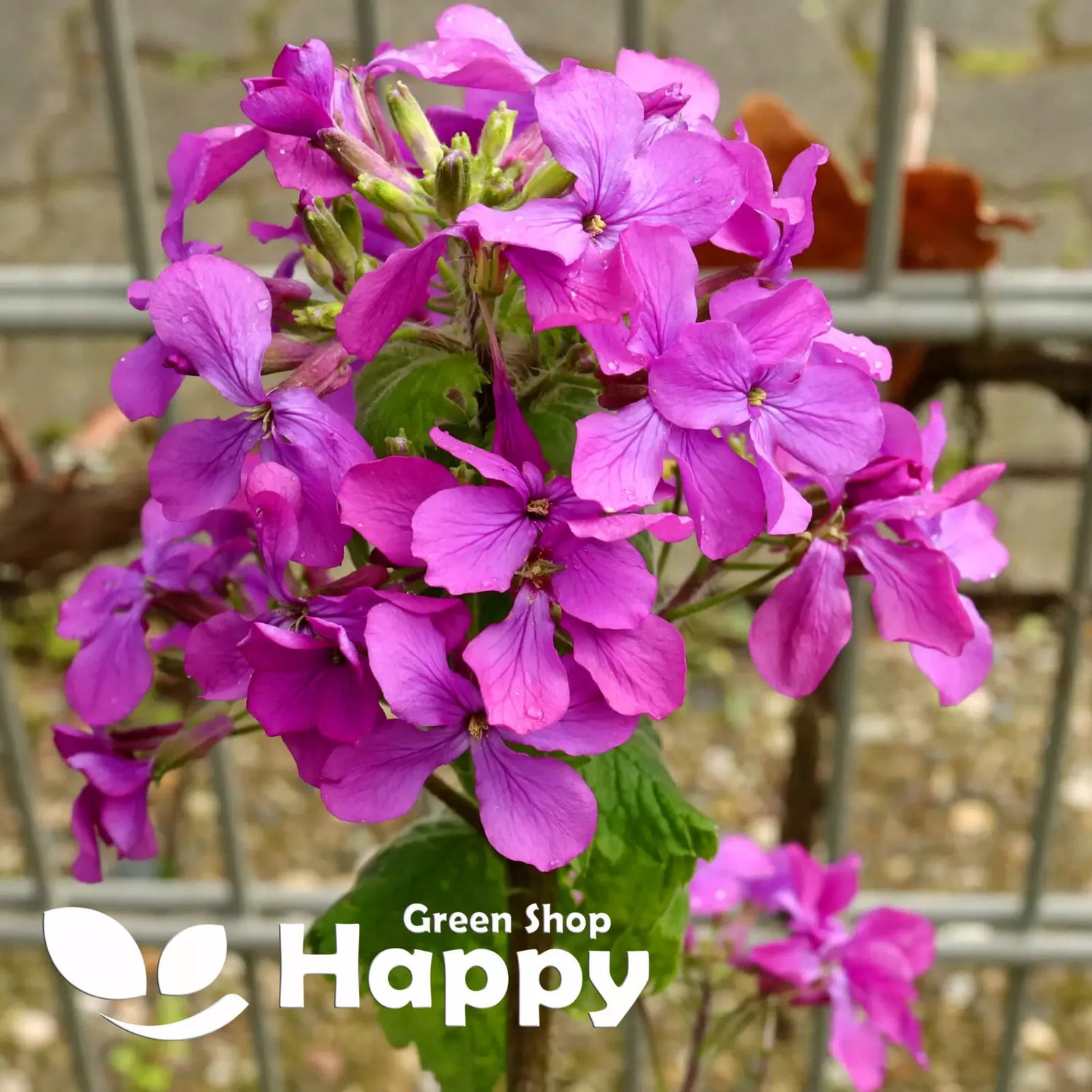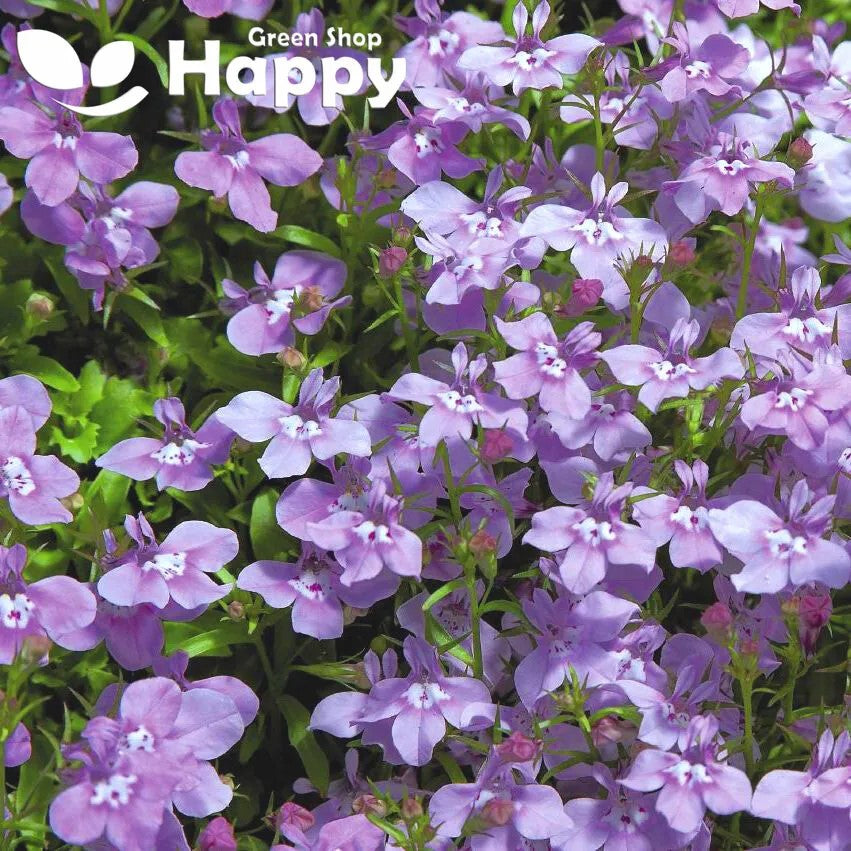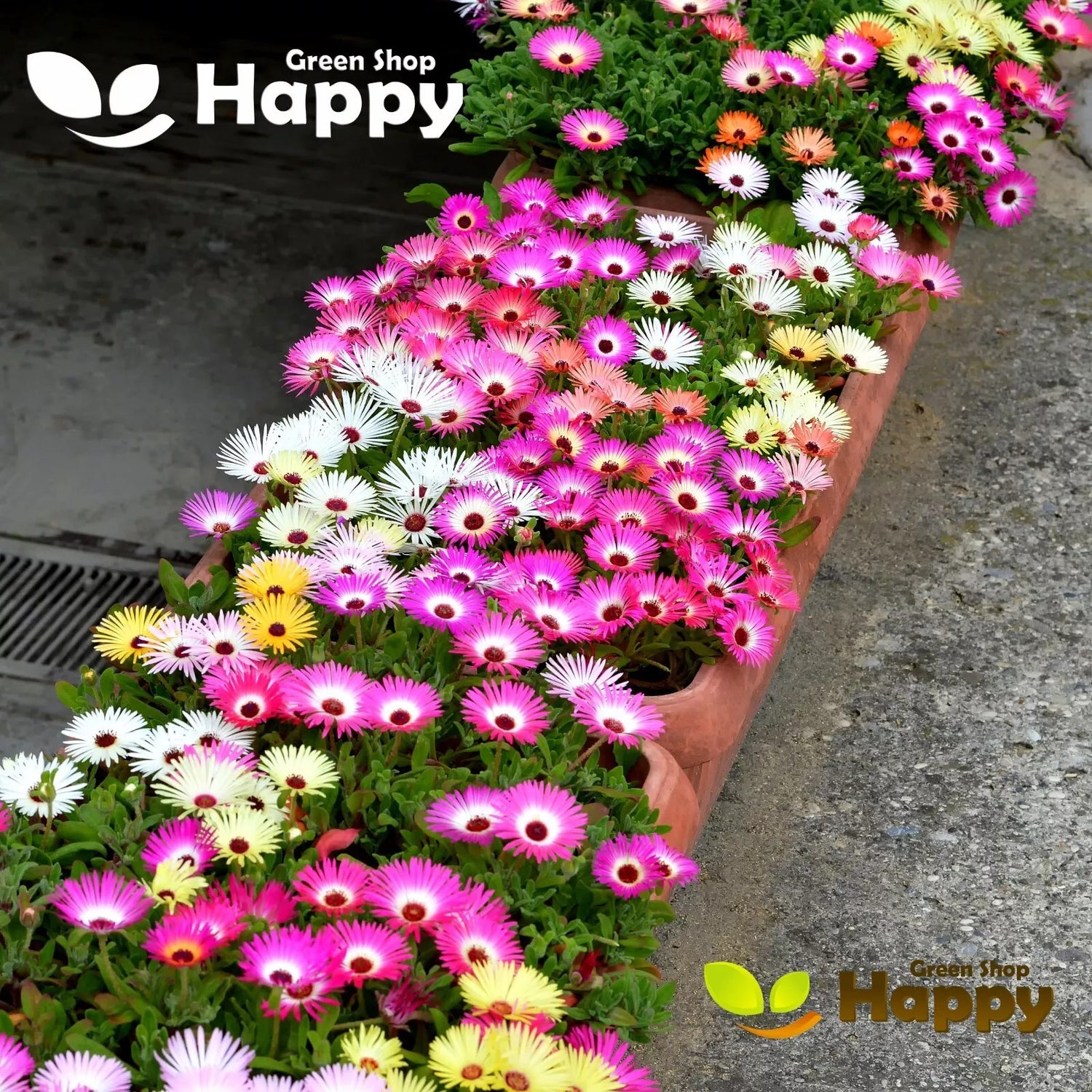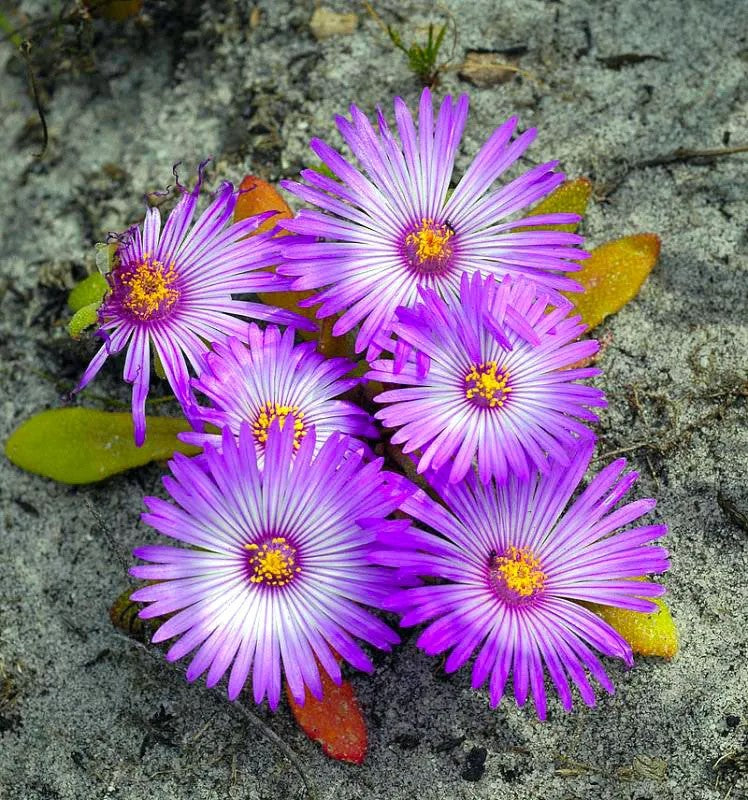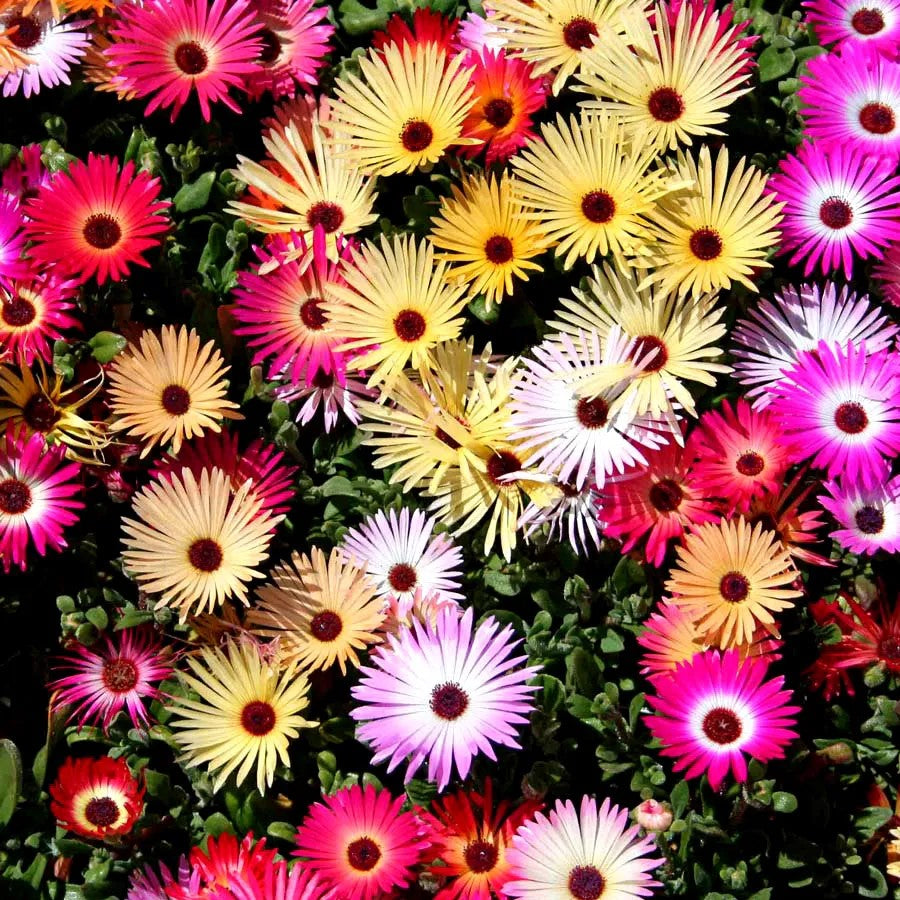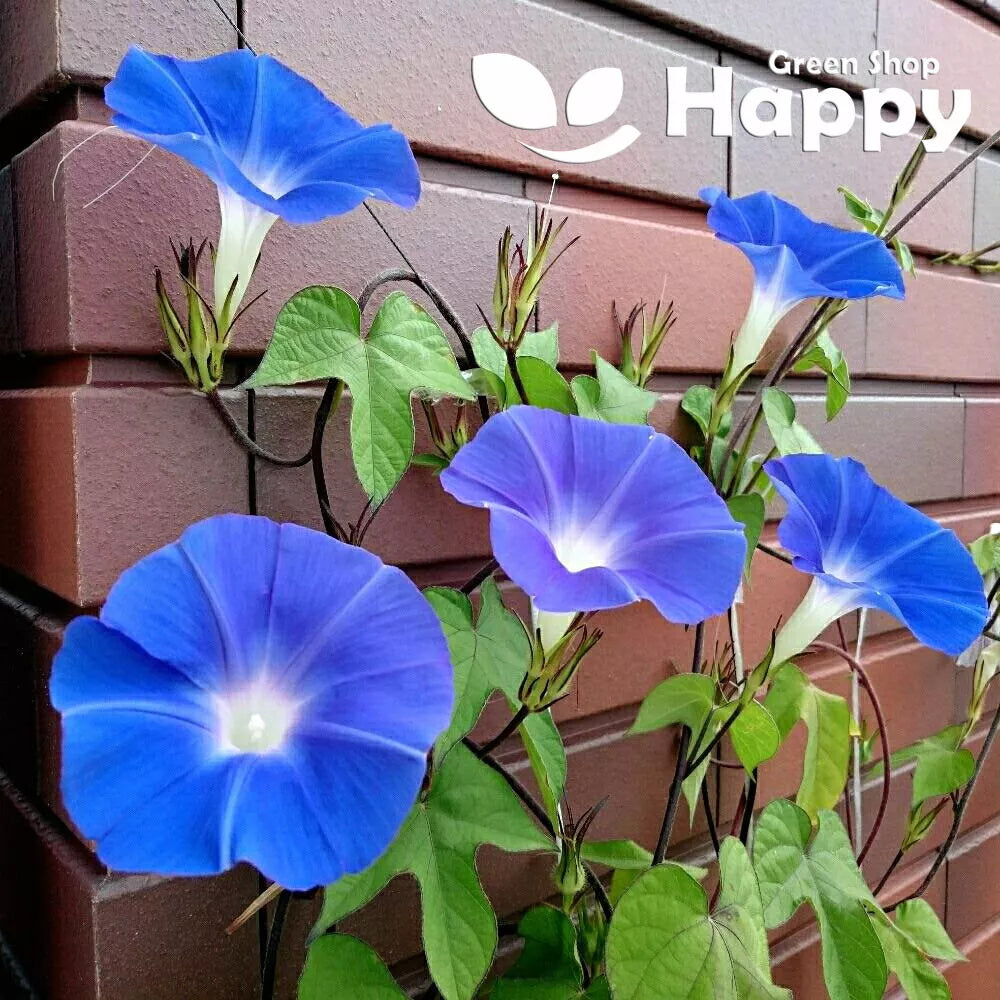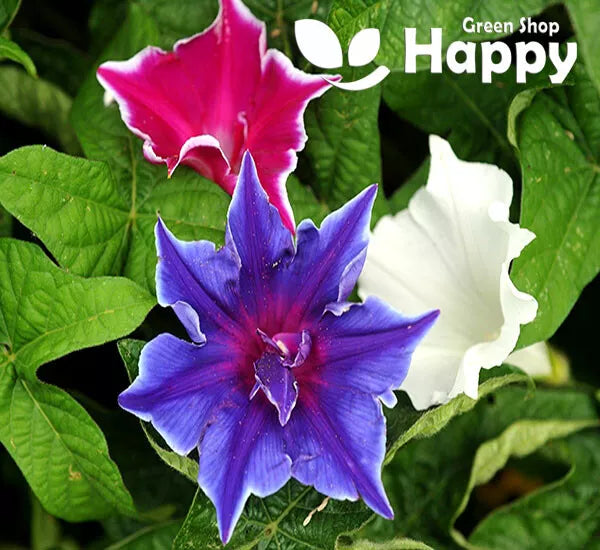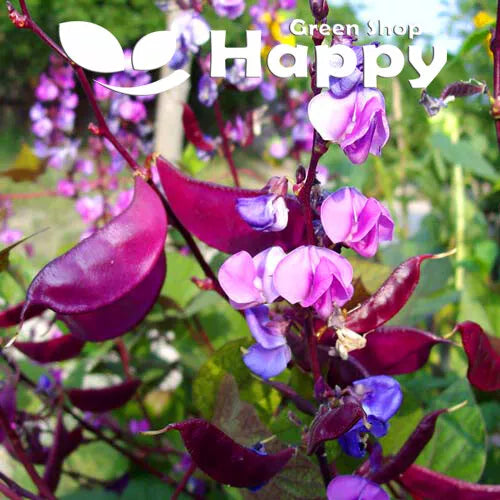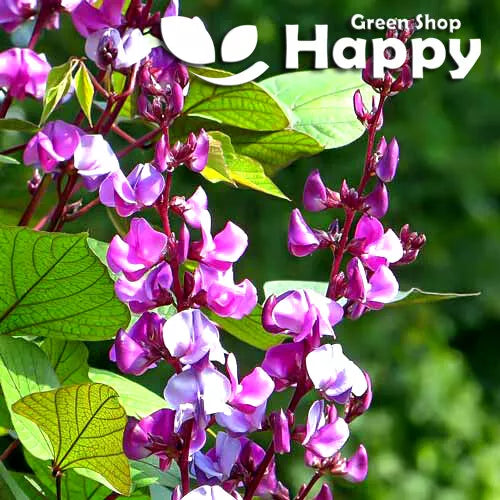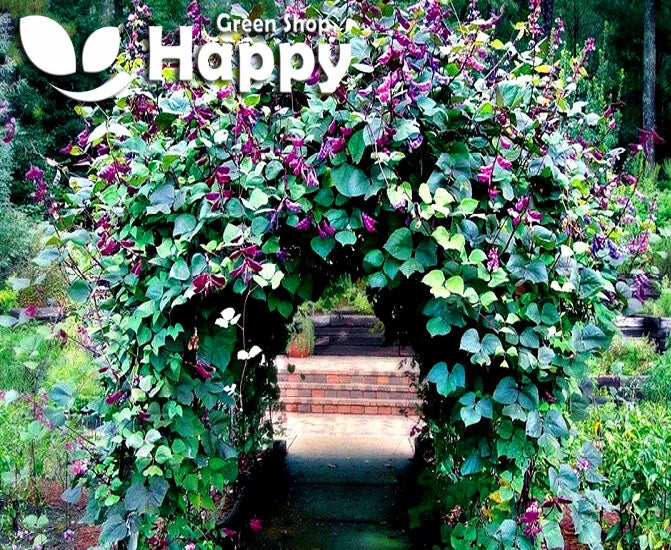Sort by:
287 products
287 products
Marsh Mallow – Seeds (Althaea officinalis)
Marsh Mallow is a hardy perennial herb known for its tall, elegant growth and soft, velvety leaves. Traditionally valued for its medicinal properties, its roots and leaves can be used in herbal remedies, teas, and natural skincare preparations. The plant also produces attractive pale pink flowers that add charm to herb and cottage gardens.
Ideal for garden beds, borders, and natural herbal plots, Marsh Mallow is easy to grow and low-maintenance once established.
How to Grow
-
Sow indoors: February – April
-
Sow outdoors: April – May
-
Depth: 0.5–1 cm
-
Spacing: 40–50 cm between plants
-
Position: Full sun to partial shade
-
Soil: Fertile, well-drained, moist
-
Watering: Regular watering until established
Key Features
-
Hardy perennial herb with medicinal and culinary uses
-
Soft, velvety leaves and pale pink flowers
-
Ideal for teas, herbal remedies, and natural skincare
-
Low-maintenance once established
-
Suitable for herb gardens, borders, and cottage gardens
Harvest
-
Harvesting period: Summer – Autumn
-
Pick leaves and flowers as needed; roots can be harvested in autumn for medicinal use.
Short Tip
For a continuous supply, harvest leaves selectively and leave some to flower for seeds.
Mallow ‘Zebrina’ – Seeds
(Malva sylvestris)
Mallow ‘Zebrina’ is a striking biennial or short-lived perennial with vibrant violet-purple flowers adorned with darker purple stripes. Its long flowering season and bushy habit make it perfect for cottage gardens, borders, and pollinator-friendly plantings. Easy to grow and low-maintenance, it adds a splash of color and attracts bees and butterflies.
Why Grow Mallow ‘Zebrina’?
-
Vibrant violet-purple flowers with dark striped markings
-
Long-flowering, bushy habit
-
Attracts bees, butterflies, and other pollinators
-
Low-maintenance and easy to grow
Key Features
-
Type: Biennial / short-lived perennial
-
Height: 60–90 cm
-
Flowers: Summer to autumn
-
Position: Full sun to partial shade
-
Soil: Well-drained, moderately fertile
Ideal For
-
Cottage and mixed borders
-
Pollinator-friendly gardens
-
Cut flower arrangements
-
Low-maintenance ornamental planting
Sowing & Growing
-
Sow indoors: February–April in seed trays
-
Sow outdoors: April–May directly in prepared soil
-
Germination: 10–20 days at 18–20°C
-
Spacing: 30–40 cm apart
-
Care: Water moderately; deadhead to prolong flowering
Love-in-a-Mist 'Miss Jekyll' Double Mix Seeds (Nigella damascena)
Love-in-a-Mist 'Miss Jekyll' Double Mix is an elegant annual with double, papery blooms in shades of blue, white, and pink, surrounded by delicate feathery foliage. Its airy, cottage-garden charm makes it perfect for borders, containers, and cutting gardens. Loved for its intricate blooms and long flowering season, it adds whimsical beauty to any garden.
What Makes It Special
-
Double, papery blooms in a mix of blue, white, and pink
-
Delicate, feathery foliage creates an airy, cottage-garden effect
-
Long-flowering and easy to grow
-
Attracts pollinators and makes excellent cut flowers
Key Features
-
Botanical name: Nigella damascena
-
Variety: 'Miss Jekyll' Double Mix
-
Seed count: Approx. seeds per pack
-
Height/Spread: 30–40 cm tall, 15–20 cm spread
-
Position: Full sun; fertile, well-drained soil
-
Flowering period: June–September
Ideal For
-
Borders and cottage gardens
-
Containers and patio displays
-
Cutting gardens and floral arrangements
-
Pollinator-friendly gardens
Sowing Instructions
-
When to sow: March–May outdoors; February–April indoors
-
How to sow:
-
Sow seeds thinly on the surface of moist seed compost and press lightly; do not cover
-
Germination occurs in 10–14 days at 15–20°C
-
-
Transplanting: Thin seedlings to 15–20 cm apart after germination
-
Care: Water moderately; deadhead for prolonged flowering
Lunaria ‘Honesty’ Seeds (Lunaria annua)
Honesty (Lunaria annua) is a charming biennial, much loved for both its spring blossoms and its unique decorative seed pods. In early summer, it produces clusters of fragrant purple to violet blooms, which attract bees and butterflies. By late summer, these give way to striking, translucent, coin-like seed pods – often called “silver dollars” – perfect for drying and floral arrangements.
What Makes It Special
-
Dual beauty: colorful spring flowers followed by decorative seed pods
-
Easy to grow, low maintenance, and self-seeding
-
A traditional favorite for dried flower arrangements
-
Attracts pollinators in spring and summer
Key Features
-
Botanical name: Lunaria annua
-
Common names: Honesty, Silver Dollar Plant, Money Plant
-
Height/Spread: 60–90 cm tall, 30–45 cm spread
-
Position: Sun or part shade; moist, well-drained soil
-
Flowering period: April – June
-
Lifespan: Hardy biennial, often self-seeds for naturalized displays
Ideal For
-
Cottage gardens and traditional borders
-
Naturalizing in wildflower-style plantings
-
Pollinator-friendly gardens
-
Dried flower arrangements
Sowing Instructions
-
When to sow: April–June outdoors or late summer for the following year’s flowers.
-
How to sow:
-
Sow thinly in a seedbed, cover lightly with soil.
-
Thin or transplant seedlings to 30–40 cm spacing.
-
-
Care: Very low maintenance. Allow some seed pods to mature for self-seeding and future displays.
Lobelia ‘Twilight’ Lilac – Seeds
(Lobelia erinus)
Lobelia ‘Twilight’ Lilac is a compact and trailing variety that produces masses of soft lilac blooms throughout summer. Its delicate flowers create a stunning carpet of color, making it perfect for hanging baskets, window boxes, and edging borders. Easy to grow and long-flowering, it adds a graceful, airy charm to any garden display.
Why Grow Lobelia ‘Twilight’ Lilac?
-
Masses of soft lilac blooms all summer
-
Compact and trailing growth habit
-
Perfect for baskets, containers, and edging
-
Easy to grow and low-maintenance
Key Features
-
Type: Half-hardy annual
-
Height: 10–15 cm
-
Flowers: June–September
-
Position: Full sun to partial shade
-
Soil: Moist, well-drained
Ideal For
-
Hanging baskets and window boxes
-
Edging borders and rockeries
-
Container planting
-
Adding soft lilac tones to garden displays
Sowing & Growing
-
Sow indoors: February–April on the surface of moist compost (do not cover seeds)
-
Germination: 14–21 days at 18–24°C
-
Transplant seedlings into trays when large enough to handle
-
Harden off before planting outdoors after last frost
-
Spacing: 10–15 cm apart
Livingstone Daisy Mixed – Seeds (Dorotheanthus bellidiformis)
The Livingstone Daisy Mixed is a dazzling carpet-forming annual that produces masses of daisy-like blooms in vibrant shades of pink, red, orange, yellow, and white. The flowers open wide in full sunlight, creating a striking display over their low-growing, succulent foliage. Perfect for hot, dry, sunny spots, this cheerful mix brightens up any summer garden with its jewel-like colors.
What Makes It Special
-
Brilliant mix of jewel-toned daisy flowers
-
Thrives in poor, dry soils and full sun
-
Excellent ground cover for summer displays
-
Compact, trailing habit ideal for edging and containers
Key Features
-
Botanical name: Dorotheanthus bellidiformis
-
Common name: Livingstone Daisy / Ice Plant
-
Variety: Mixed colors
-
Seed count: Approx. seeds per pack
-
Height/Spread: 10–15 cm tall, spreading up to 20 cm
-
Position: Full sun; well-drained soil
-
Flowering period: Summer (June–September)
Ideal For
-
Bedding and edging
-
Rockeries and gravel gardens
-
Containers and window boxes
-
Drought-tolerant displays in sunny spots
Sowing Instructions
-
When to sow: February–April indoors, or May outdoors after frost
-
How to sow:
-
Sow seeds on the surface of fine, moist compost; do not cover (light aids germination)
-
Keep at 18–20°C; germination in 10–21 days
-
-
After germination:
-
Transplant seedlings when large enough to handle
-
Harden off and plant outdoors 10–15 cm apart in sunny, free-draining soil
-
Large-Flowered Dwarf Morning Call Mixed – 50 Seeds (Ipomoea nil)
The Large-Flowered Dwarf Morning Call Mixed (Ipomoea nil) is a charming annual producing vibrant, trumpet-shaped flowers in a mix of colors. Compact and low-growing, it’s ideal for pots, containers, or small garden beds, bringing a burst of color to sunny spots throughout summer. Fast-growing and easy to maintain, it’s perfect for brightening any garden space.
Why Grow "Morning Call Mixed"
-
Large, trumpet-shaped flowers in mixed vibrant colors
-
Compact, dwarf habit perfect for small spaces
-
Long flowering season during summer
-
Easy to grow and maintain
Key Features
-
Type: Annual (Ipomoea nil)
-
Height: 25–35 cm
-
Flowering: June–September
-
Position: Full sun
-
Uses: Containers, pots, small garden beds, borders
Ideal For
-
Container planting and window boxes
-
Small garden beds and borders
-
Adding vibrant summer color
-
Pollinator-friendly plantings
Sowing & Growing
-
Sow indoors: February–April in seed trays
-
Sow outdoors: April–May after frost
-
Germination: 7–14 days at 18–22°C
-
Thin seedlings to 20–25 cm apart
-
Prefers full sun and well-drained soil
-
Water moderately and remove spent flowers to prolong blooming
Japanese Morning Glory 'Kikyo Zaki Mix' – Seeds
(Ipomoea nil)
The Japanese Morning Glory 'Kikyo Zaki Mix' is a traditional and highly prized variety, renowned in Japanese horticulture for its uniquely ruffled, star-shaped blooms. This climbing annual produces an extraordinary mix of deep purples, blues, pinks, and whites, each with striking petal forms that set them apart from common morning glories. The lush green foliage and vigorous growth make it a spectacular choice for trellises, fences, or balcony planters.
Key Features
-
Type: Annual climber
-
Height: 2–3 m
-
Spread: 30–40 cm
-
Flowering: July–October
-
Position: Full sun / partial shade
-
Soil: Fertile, well-drained
Ideal For
-
Training up fences, arches, or trellises
-
Balcony or patio containers with supports
-
Creating a vertical display of colour
-
Collectors of rare Japanese heirloom flowers
Sowing & Growing
-
Sow indoors: March–April in pots or trays
-
Sow outdoors: May–June after last frost
-
Nick or soak seeds for 12–24 hours before sowing to aid germination
-
Germination: 7–14 days
-
Plant spacing: 30–40 cm
-
Requires support to climb
-
Prefers full sun but tolerates light shade
Hyacinth Bean – Seeds
(Dolichos lablab)
Hyacinth Bean is a fast-growing climber that brings striking ornamental value with its purple-tinged stems, lush foliage, and clusters of lilac-purple flowers followed by eye-catching, glossy pods. Perfect for creating quick vertical coverage, it adds vibrant color and an exotic touch to fences, arches, or trellises throughout summer.
Key Features
-
Type: Tender annual climber
-
Height: 200–300 cm
-
Spread: 60–90 cm
-
Flowering: July–October
-
Position: Full sun
-
Soil: Well-drained, fertile soil
Ideal For
-
Trellises and arches
-
Vertical screens and fences
-
Exotic-themed gardens
-
Attracting bees and butterflies
Sowing & Growing
-
Sow indoors: March–April at 18–22°C
-
Germination: 7–14 days
-
Harden off and plant out after frost, spacing 30–45 cm
-
Provide sturdy support for climbing
Showing 162/287


